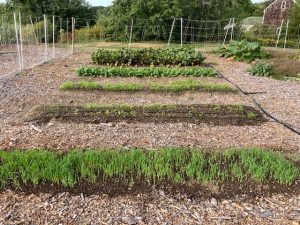What are recommendations for using arborist chips in a vegetable garden?
Question:
Please provide recommendations for using arborist chips in a vegetable garden for plants and seeds.
Answer:
Abi Griffith, Horticulture Community Education Assistant
Wood chips are really great for mulching in perennial beds, around raspberries or high bush blueberries, on permanent walkways or between raised beds to help with weed suppression and water retention. They can also be used in your compost pile (see page 2), if you have one, as a carbon source, for a healthy pile.
You may want to check out these fact sheets from the Colorado State Master Gardener Program that go into more detail about appropriate use of mulches, including wood chips. Additionally, if you have more than you can use in a few years, I’m sure your gardening friends and neighbors would love to hear from you!


